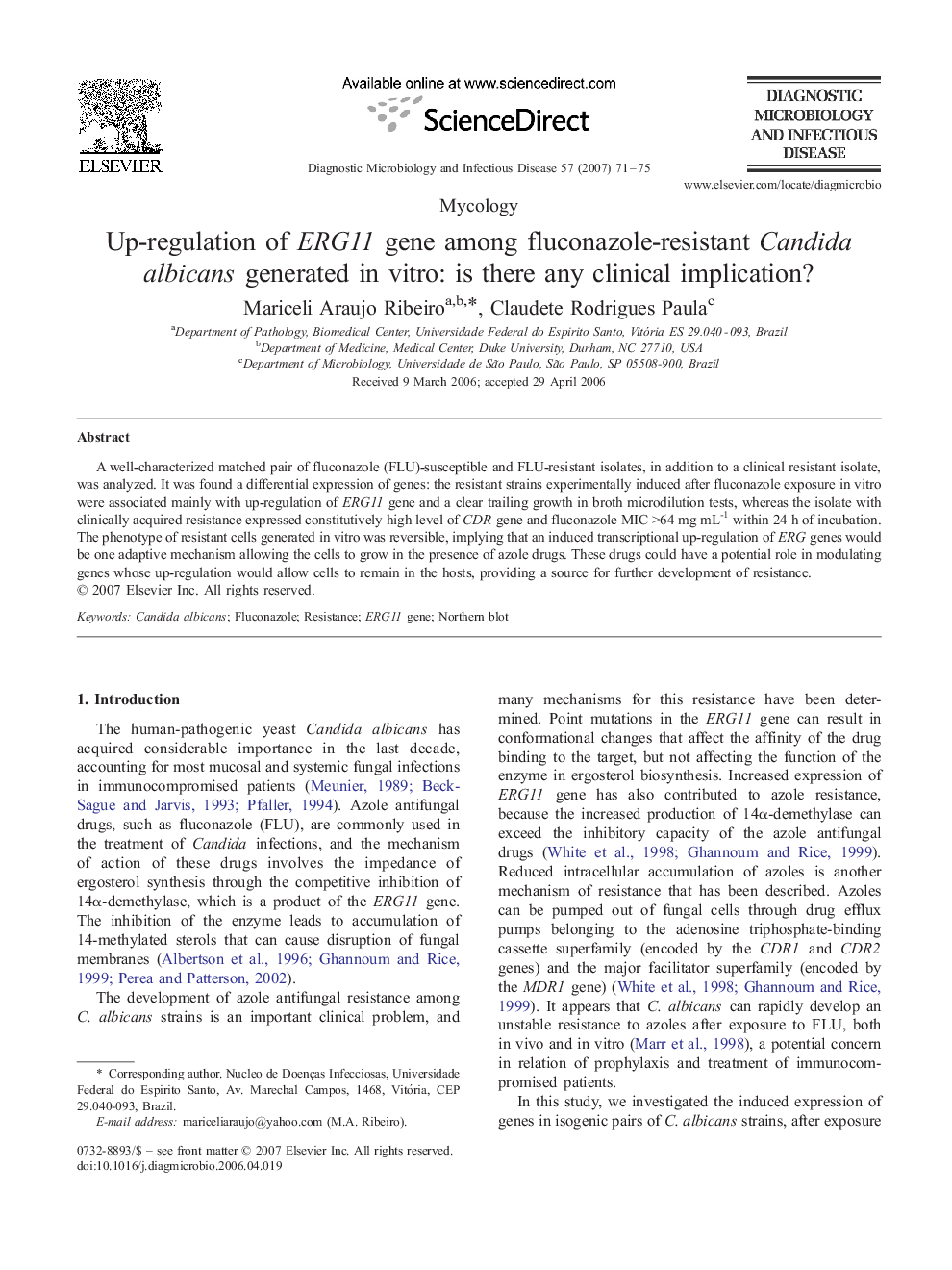| Article ID | Journal | Published Year | Pages | File Type |
|---|---|---|---|---|
| 3348445 | Diagnostic Microbiology and Infectious Disease | 2007 | 5 Pages |
A well-characterized matched pair of fluconazole (FLU)-susceptible and FLU-resistant isolates, in addition to a clinical resistant isolate, was analyzed. It was found a differential expression of genes: the resistant strains experimentally induced after fluconazole exposure in vitro were associated mainly with up-regulation of ERG11 gene and a clear trailing growth in broth microdilution tests, whereas the isolate with clinically acquired resistance expressed constitutively high level of CDR gene and fluconazole MIC >64 mg mL−1 within 24 h of incubation. The phenotype of resistant cells generated in vitro was reversible, implying that an induced transcriptional up-regulation of ERG genes would be one adaptive mechanism allowing the cells to grow in the presence of azole drugs. These drugs could have a potential role in modulating genes whose up-regulation would allow cells to remain in the hosts, providing a source for further development of resistance.
